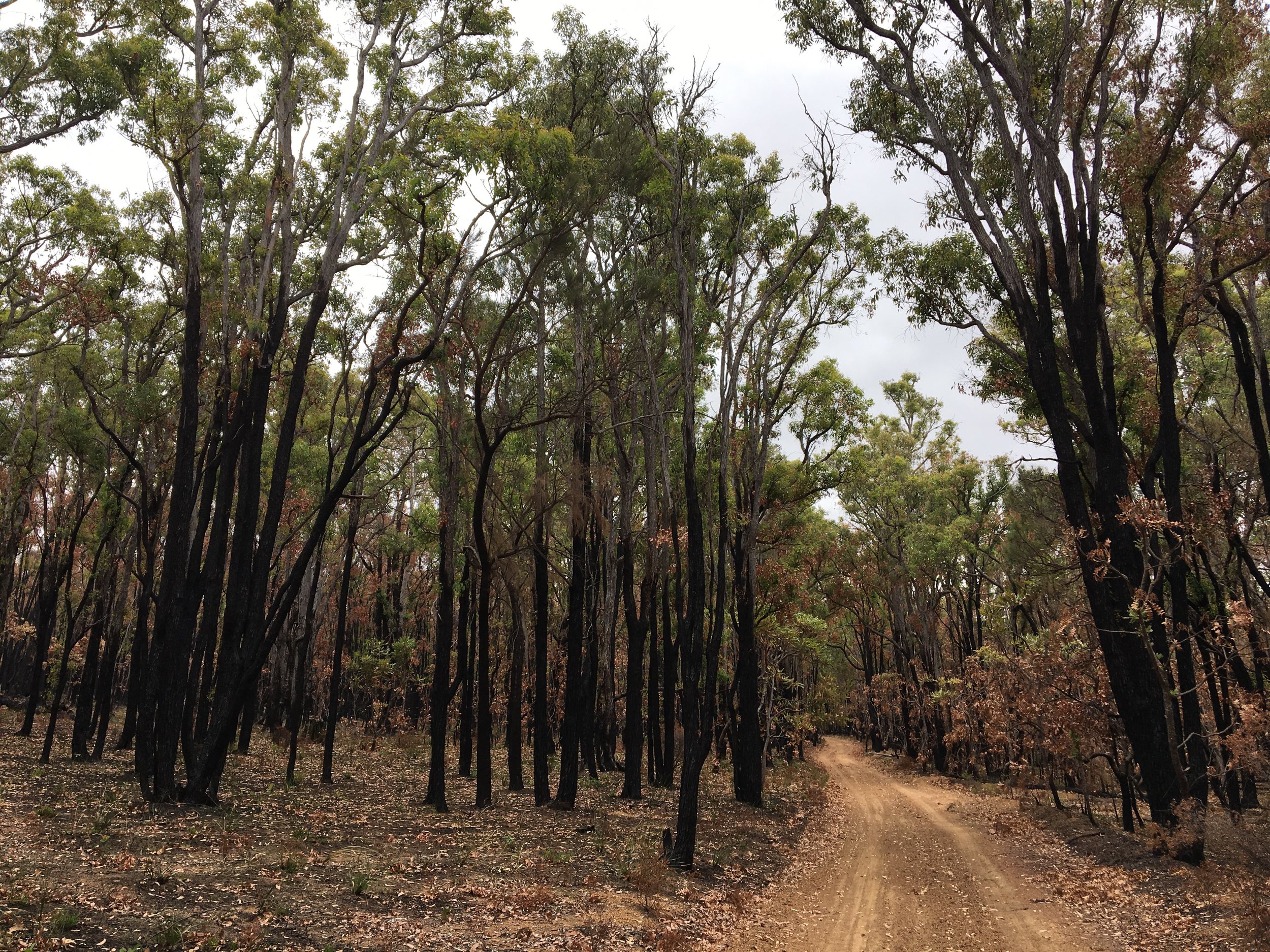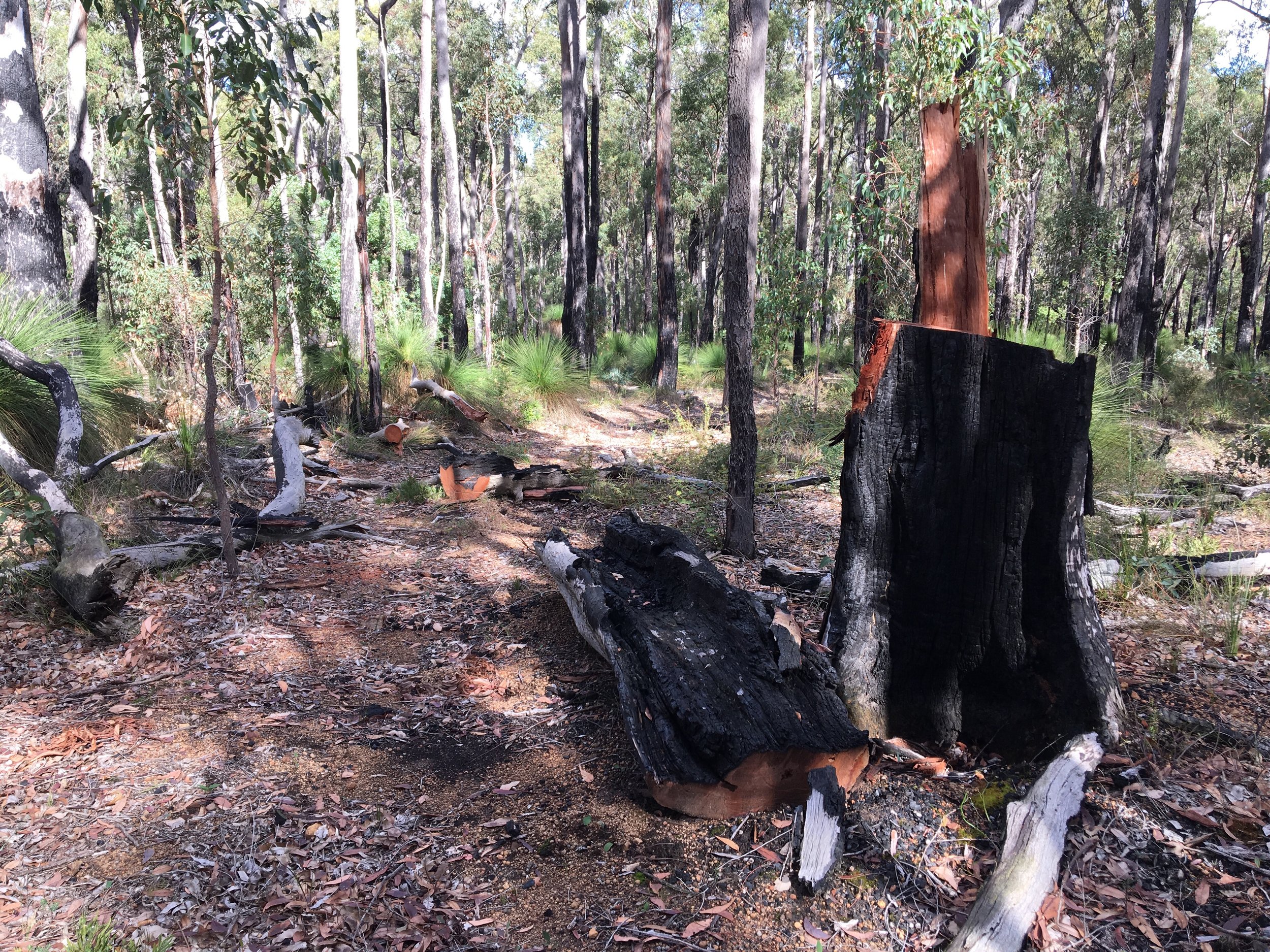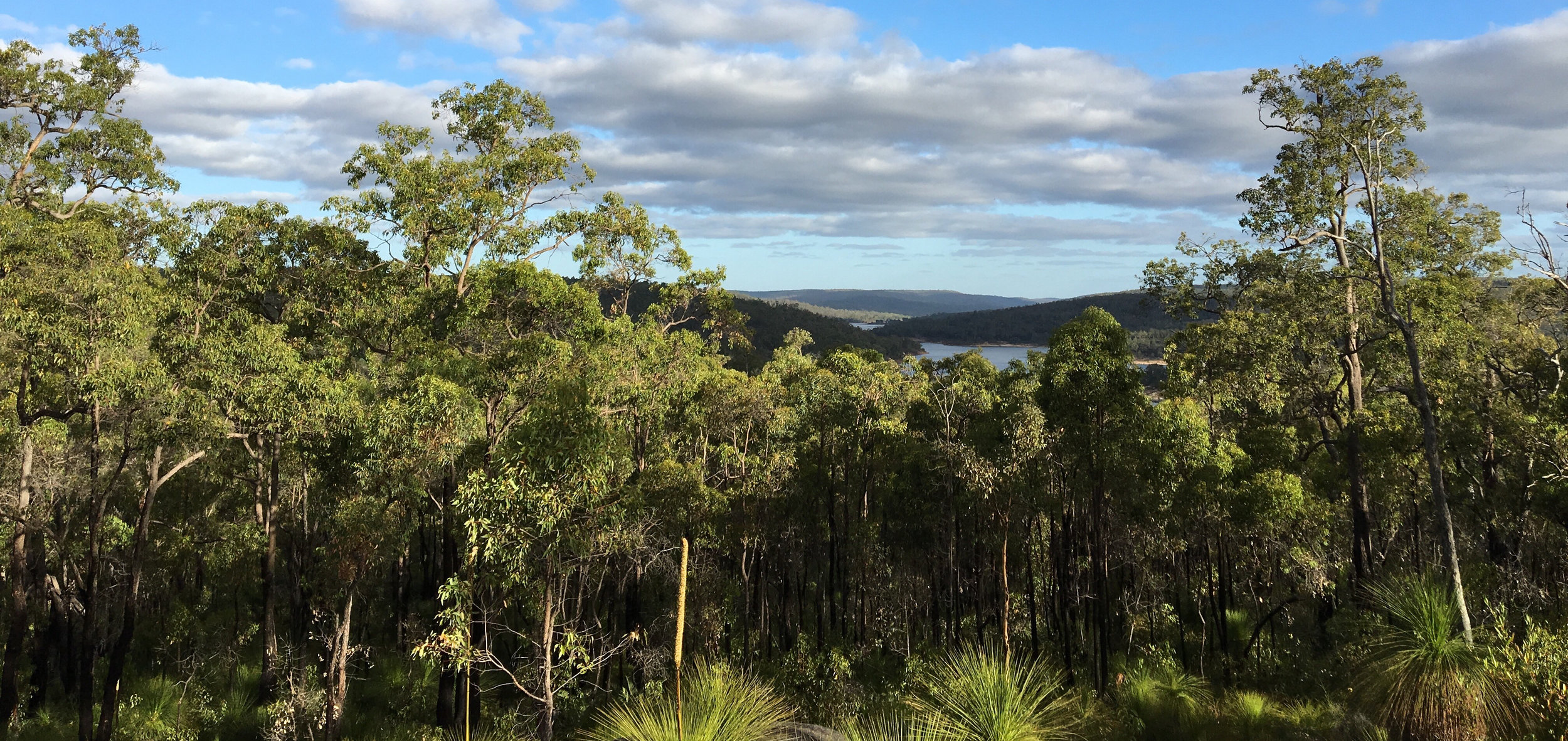 This short post aims to give people unfamiliar with the Jarrah forest a look at the forest, and how it functions as habitat for the forest red-tailed black-cockatoo.The Jarrah forest lies to the east of Perth in south-western Australia and extends south for several hundred kilometres. The dominant species are Jarrah and Marri, two large eucalypts that form a dense forest with a rather cluttered understory of lesser shrubs and grass trees. The Jarrah forest near Perth has been logged in the past, and the forest structure varies somewhat depending on which area you are in and time since logging. Some areas of the forest are very dense and difficult to move through, while others are more open.
This short post aims to give people unfamiliar with the Jarrah forest a look at the forest, and how it functions as habitat for the forest red-tailed black-cockatoo.The Jarrah forest lies to the east of Perth in south-western Australia and extends south for several hundred kilometres. The dominant species are Jarrah and Marri, two large eucalypts that form a dense forest with a rather cluttered understory of lesser shrubs and grass trees. The Jarrah forest near Perth has been logged in the past, and the forest structure varies somewhat depending on which area you are in and time since logging. Some areas of the forest are very dense and difficult to move through, while others are more open.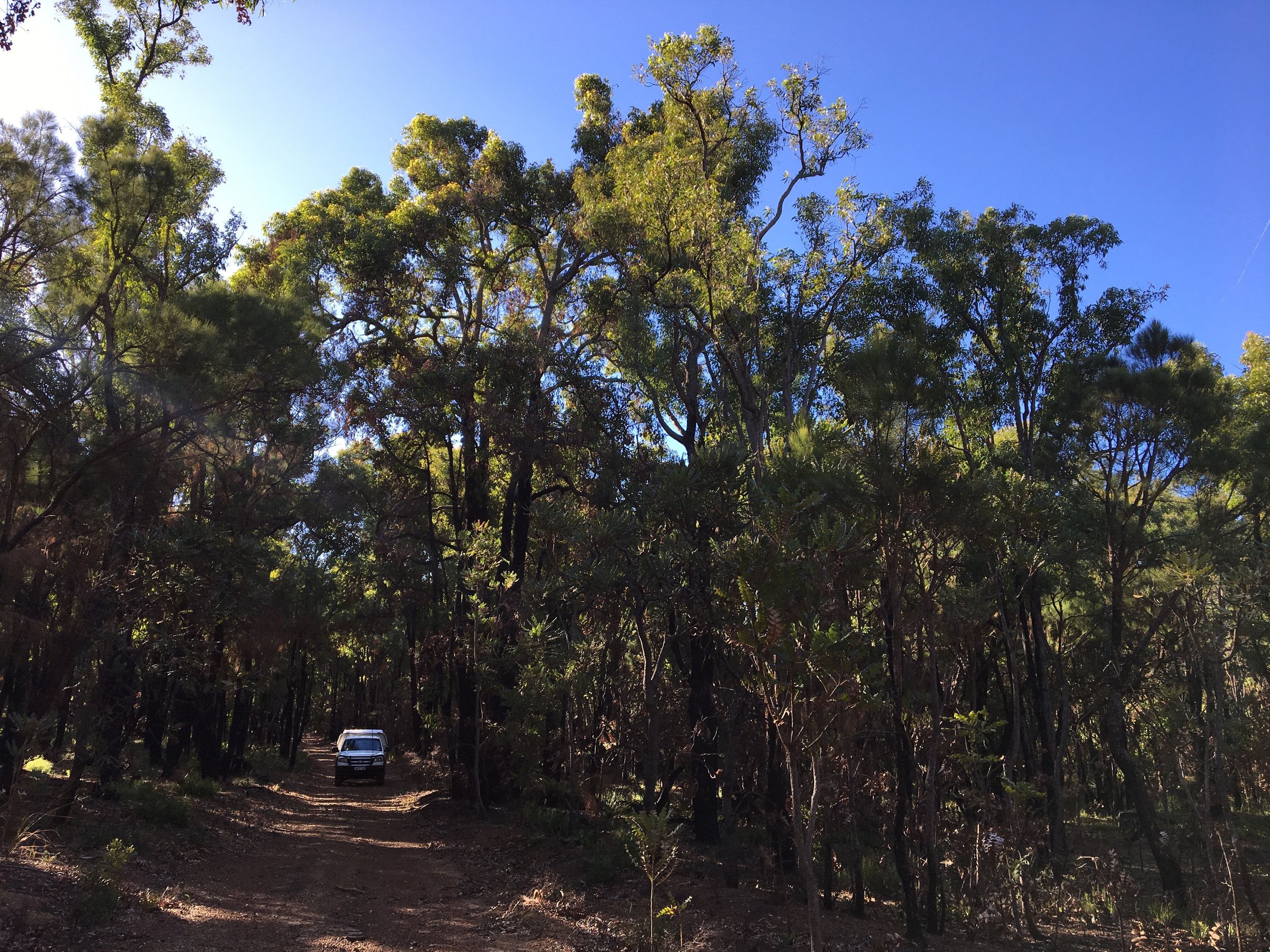
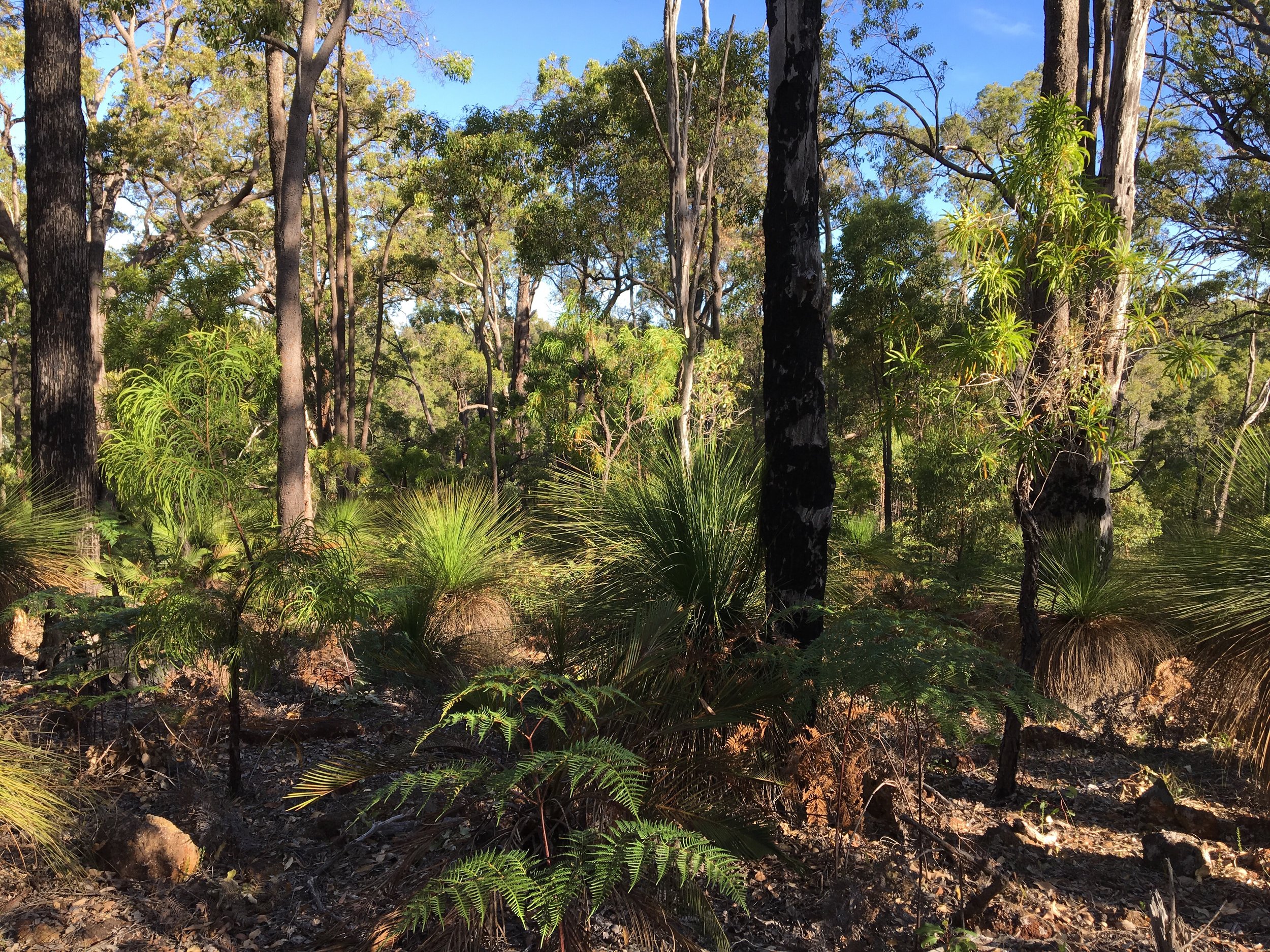 The Jarrah forest is the natural habitat of the forest red-tailed black-cockatoo (my PhD study species). It provides both food and breeding resources for the cockies. The red-tails depend on Marri and Jarrah as their main source of food, as they eat the seeds contained within the tough gumnuts. Like other black-cockatoo species, red-tails are also dependant on big old Marri trees for breeding hollows, which they renovate each year by chewing the rim and inside of the hollow. Only a few nests have ever been found in Jarrah trees, perhaps because all the large ones were logged, or maybe they take longer than Marri to get large enough to form big enough hollows.
The Jarrah forest is the natural habitat of the forest red-tailed black-cockatoo (my PhD study species). It provides both food and breeding resources for the cockies. The red-tails depend on Marri and Jarrah as their main source of food, as they eat the seeds contained within the tough gumnuts. Like other black-cockatoo species, red-tails are also dependant on big old Marri trees for breeding hollows, which they renovate each year by chewing the rim and inside of the hollow. Only a few nests have ever been found in Jarrah trees, perhaps because all the large ones were logged, or maybe they take longer than Marri to get large enough to form big enough hollows.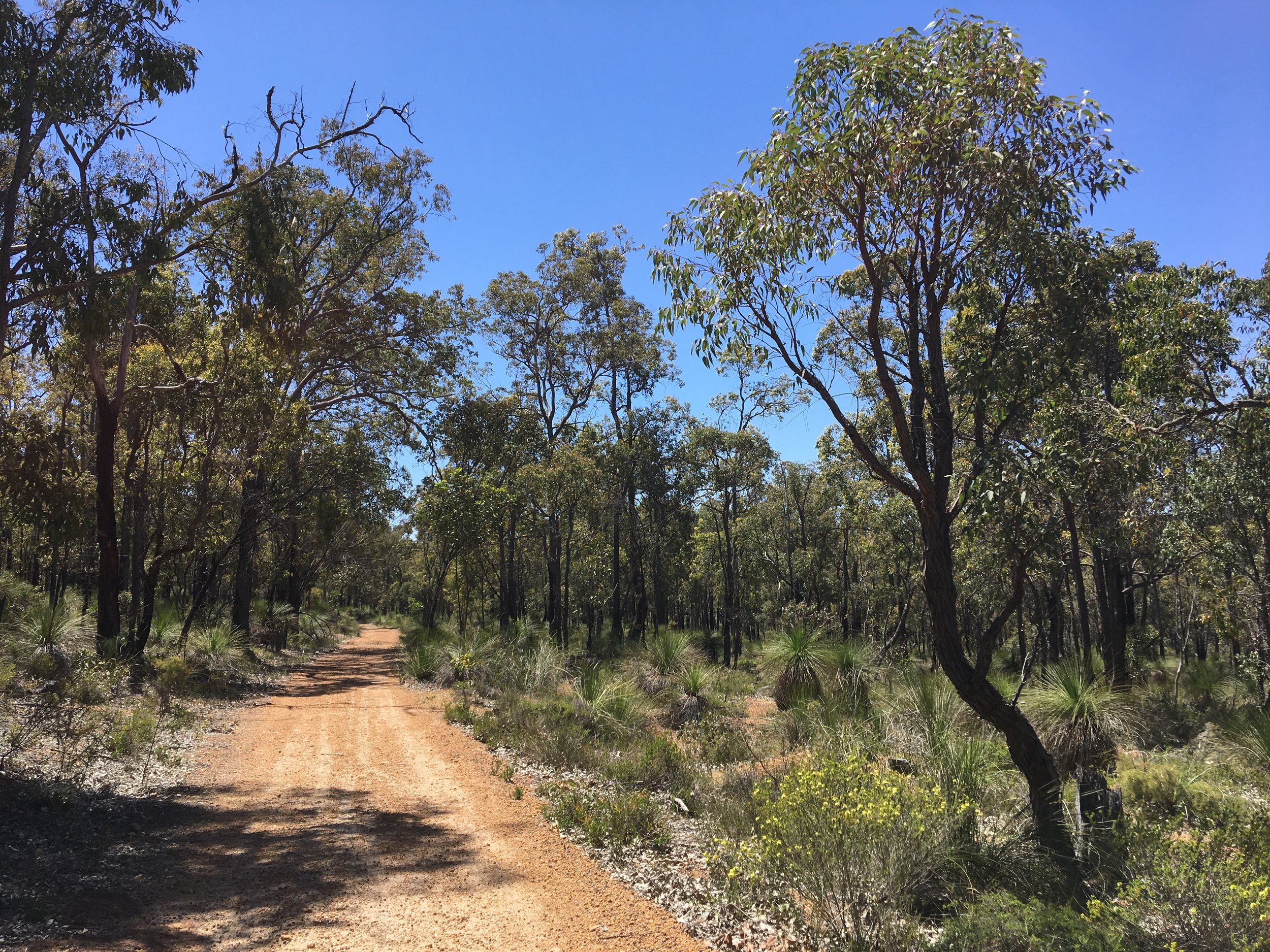
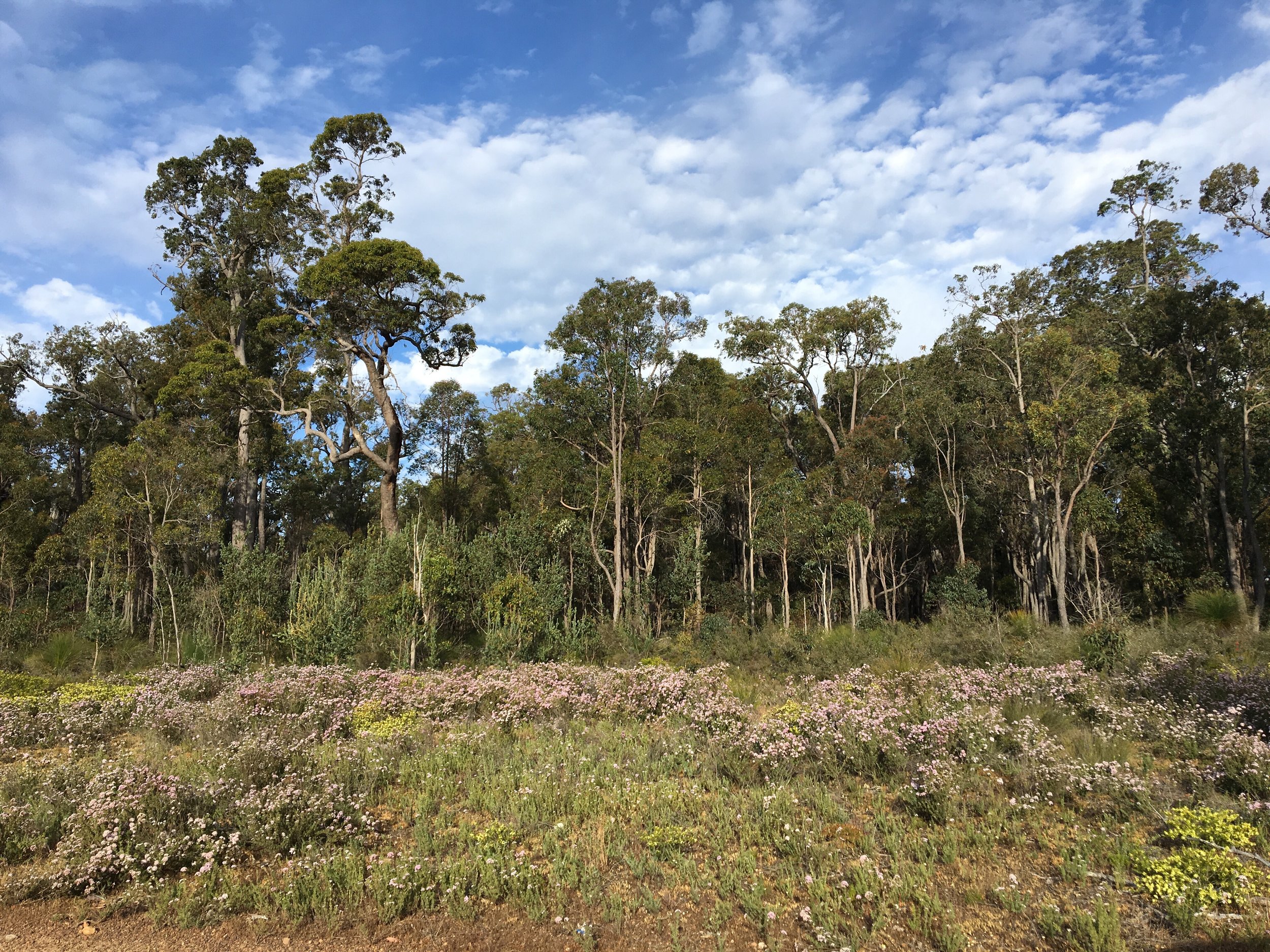 Water is available in the Jarrah forest in puddles on granite outcrops, creeks, and in dams and water troughs on properties.The forest provides everything the cockatoos need, with few predators, so why have they recently moved into urban Perth? This is the question I've been trying to answer with my PhD research. Stay tuned for the next habitat post, which will cover urban Perth!
Water is available in the Jarrah forest in puddles on granite outcrops, creeks, and in dams and water troughs on properties.The forest provides everything the cockatoos need, with few predators, so why have they recently moved into urban Perth? This is the question I've been trying to answer with my PhD research. Stay tuned for the next habitat post, which will cover urban Perth!